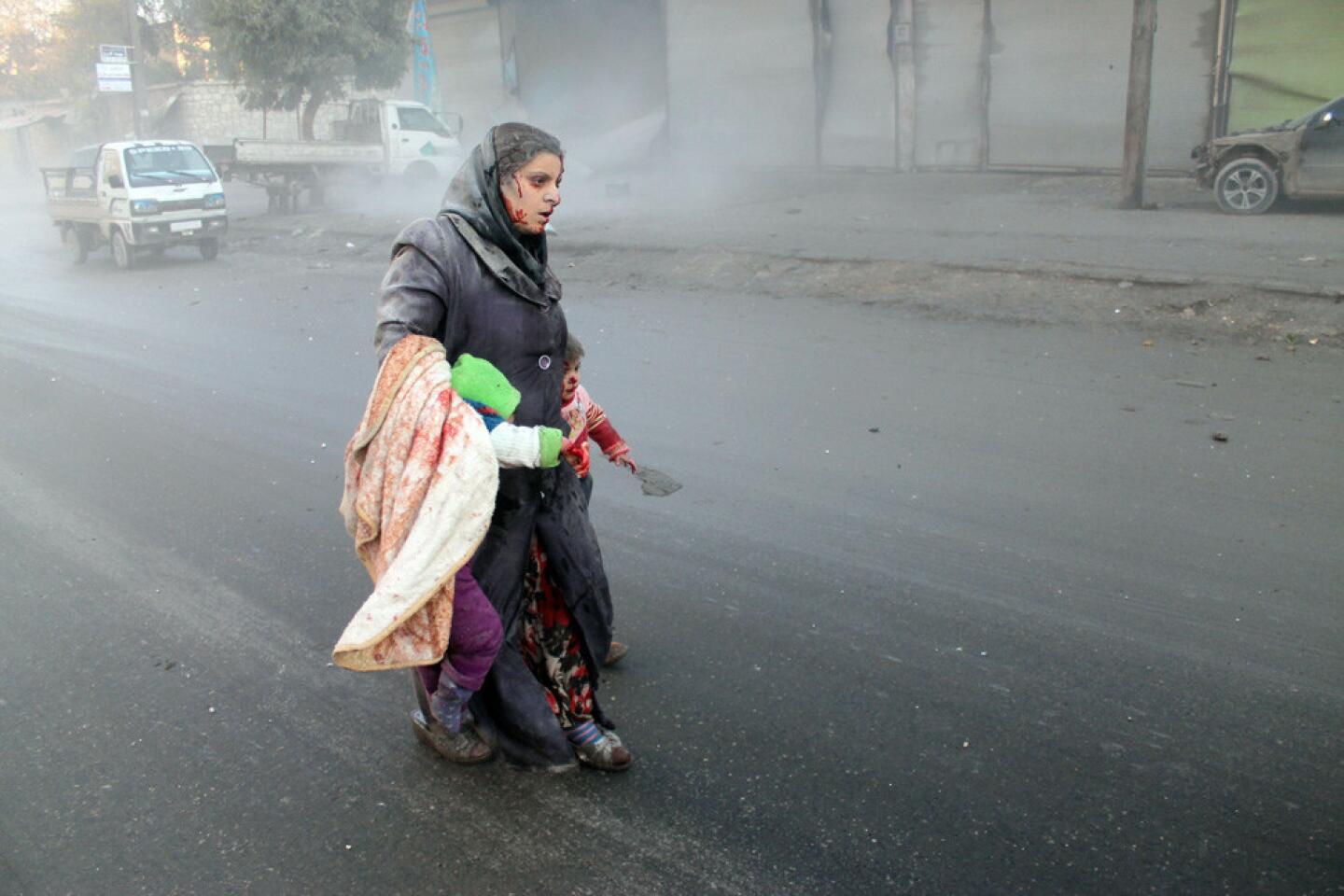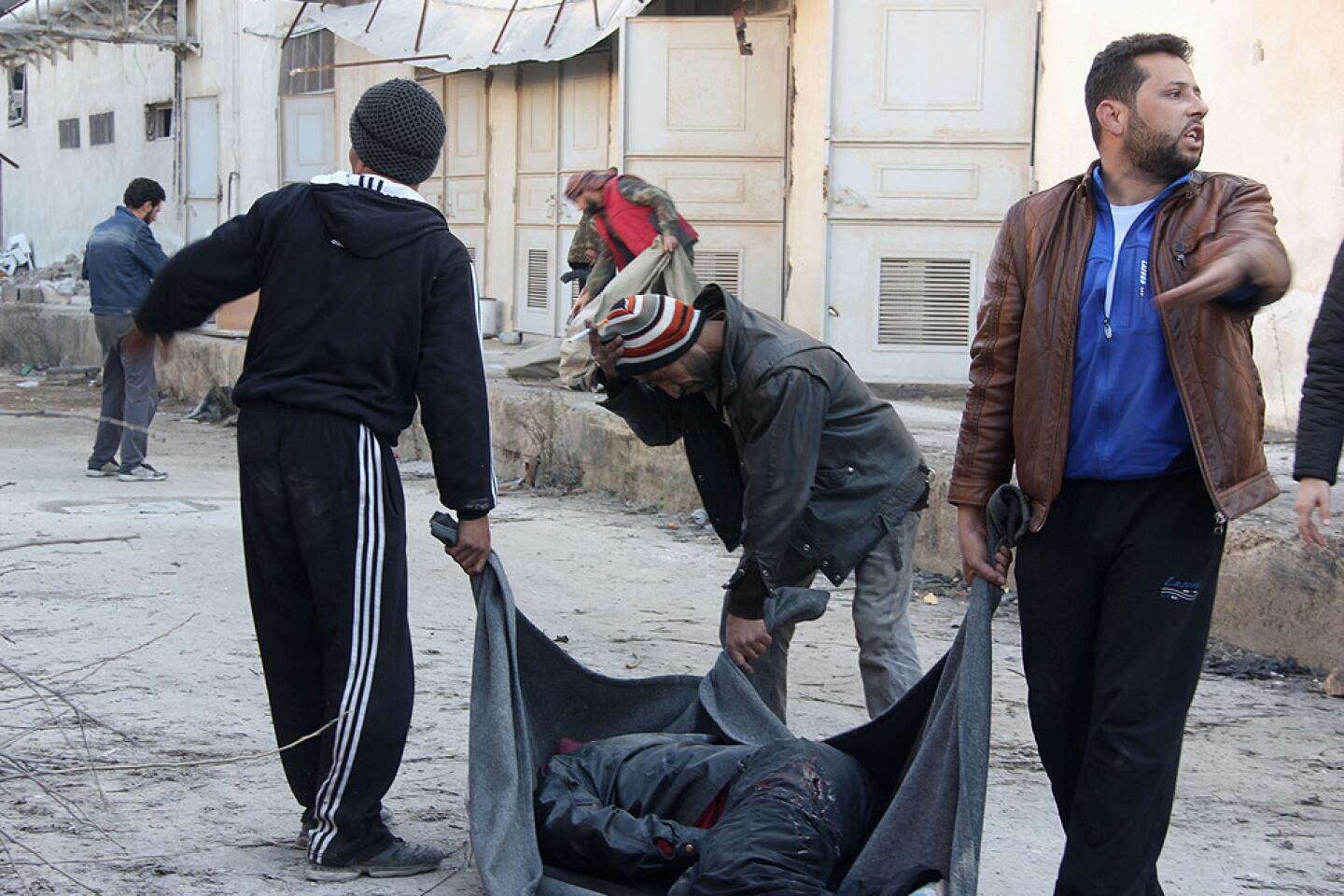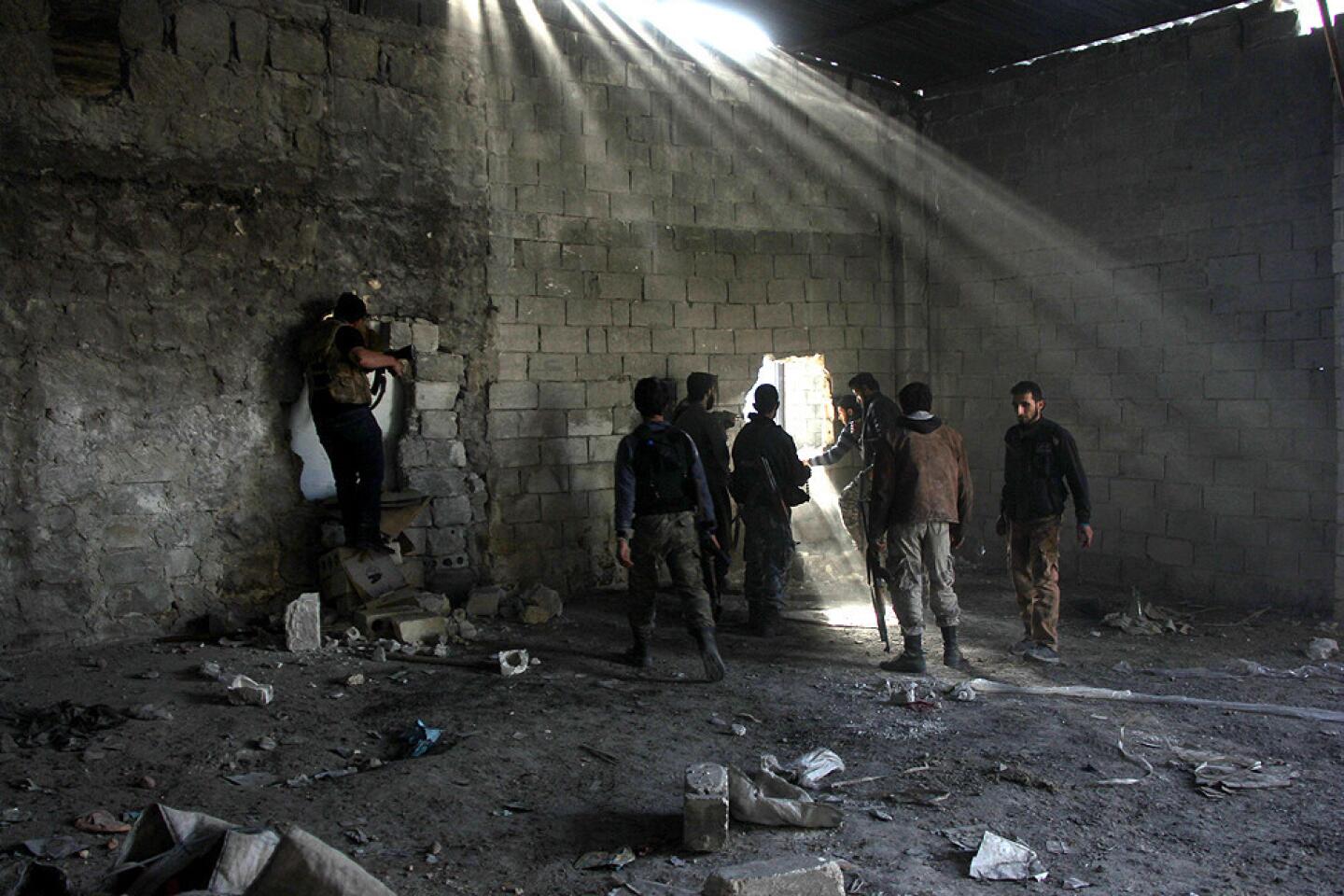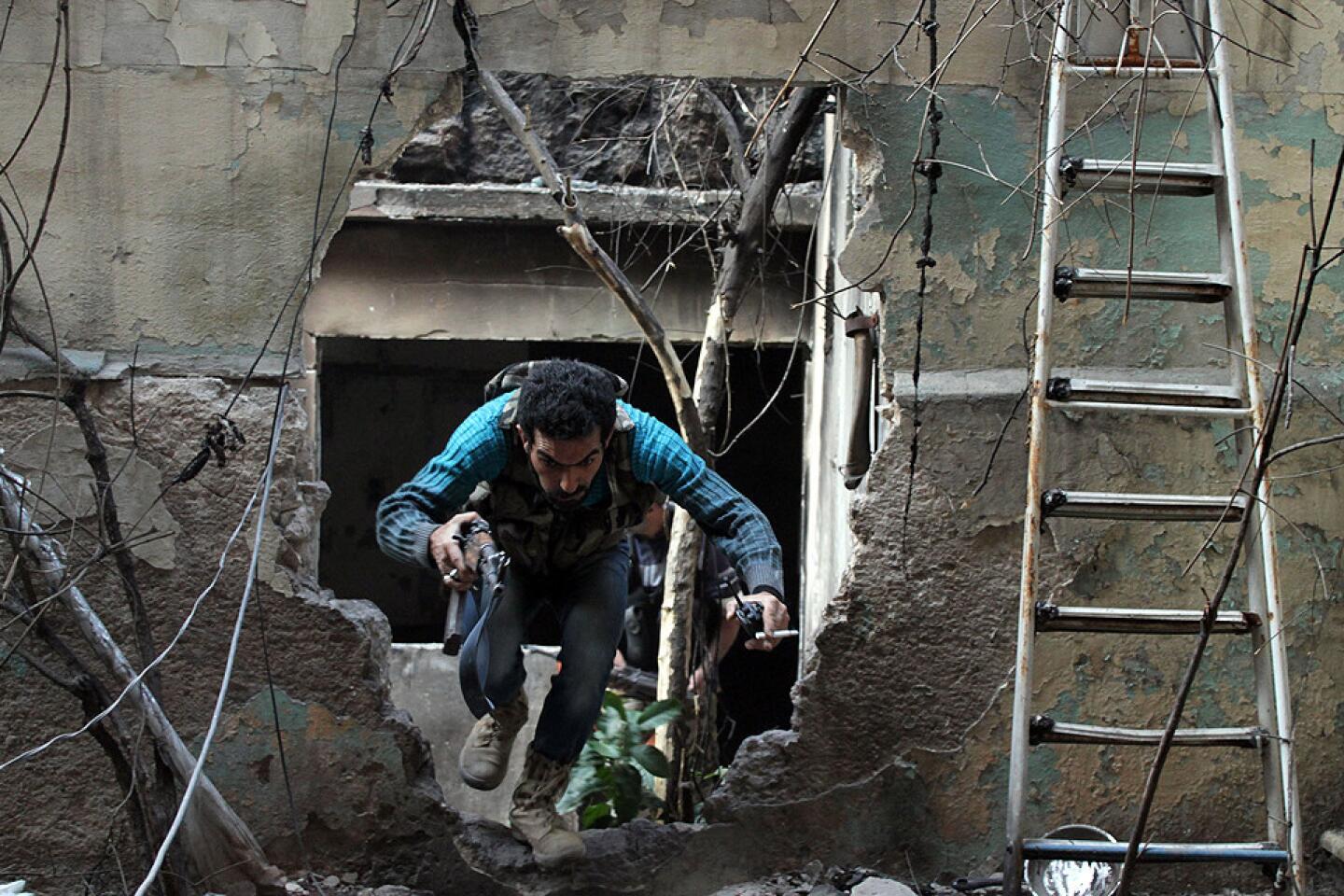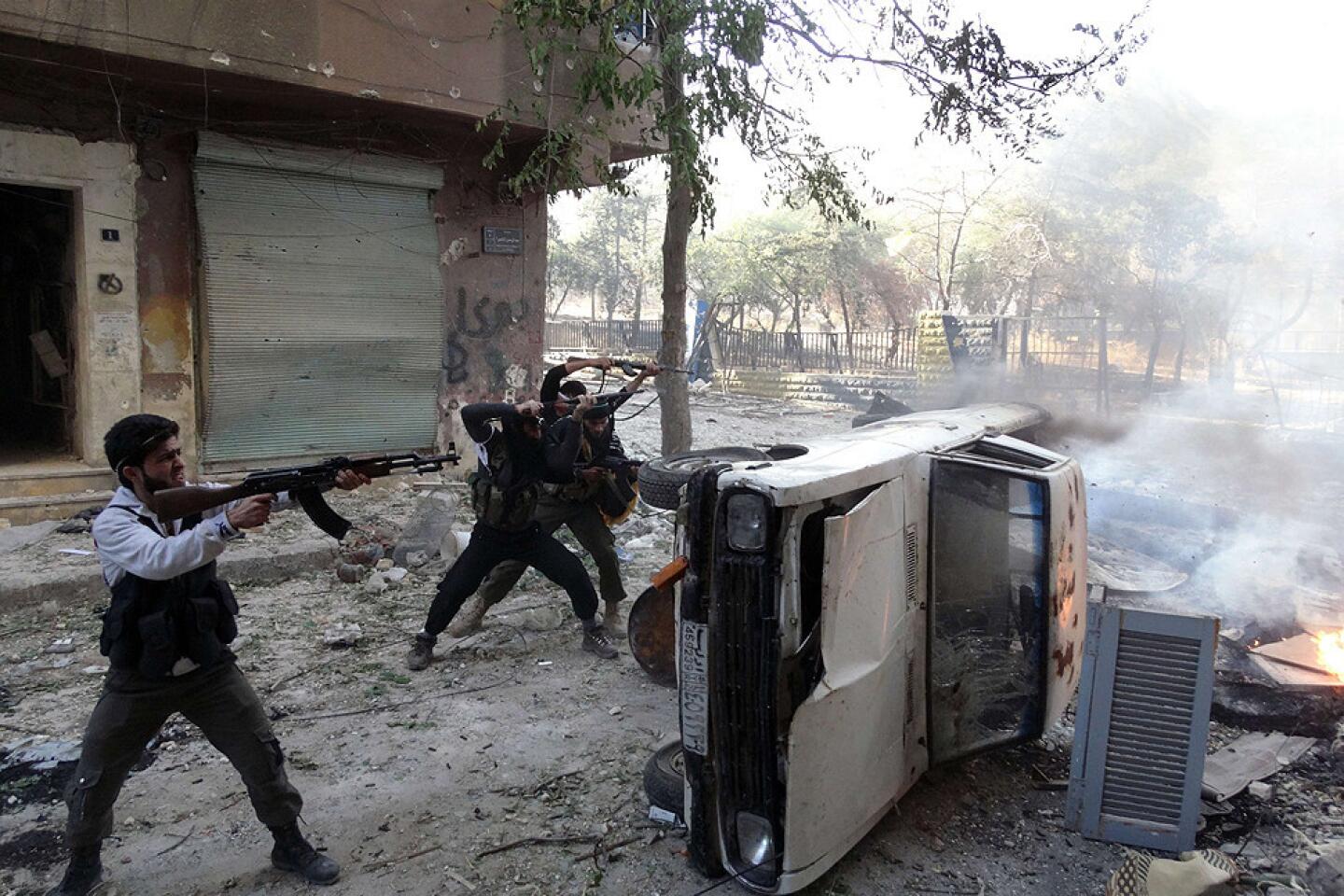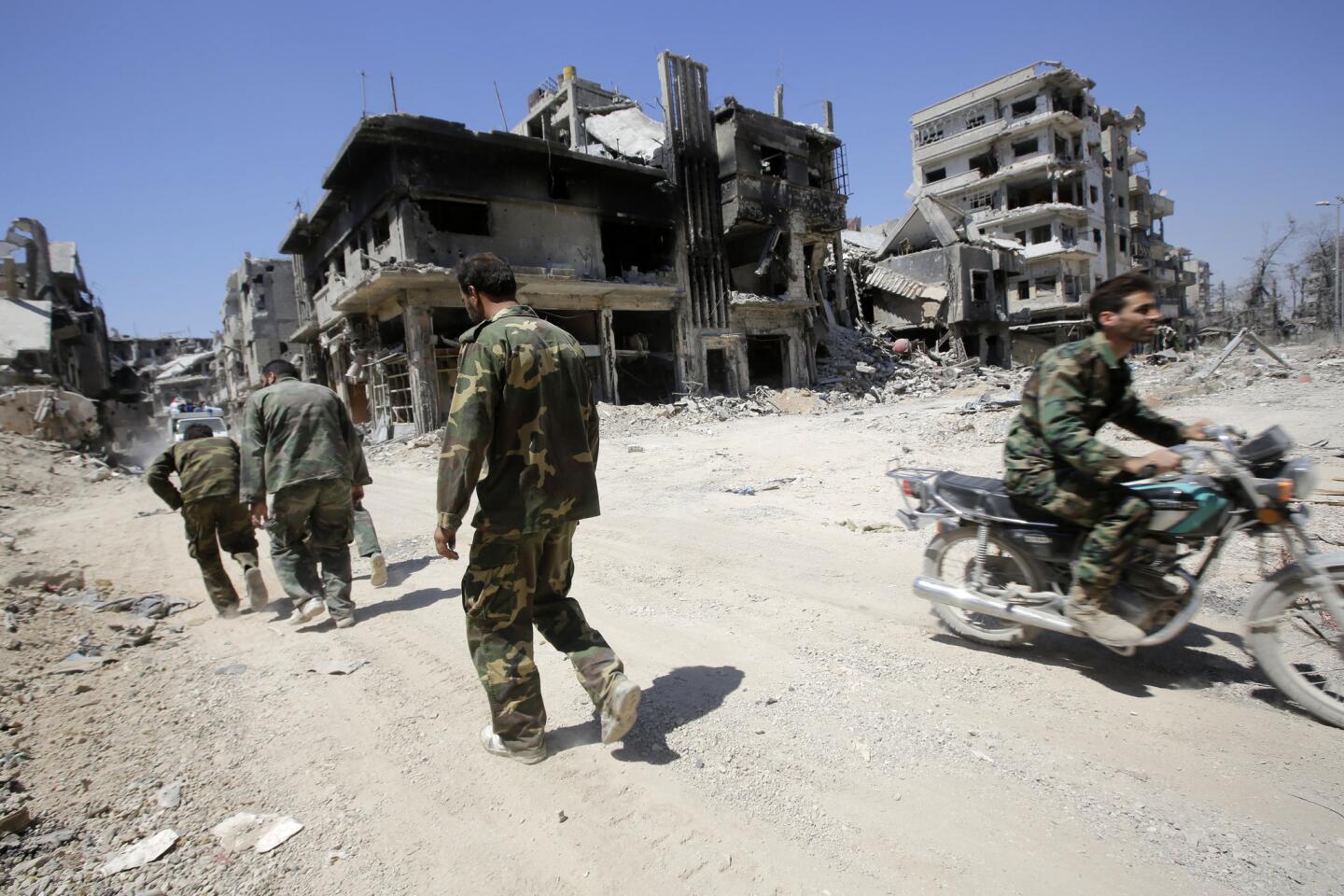Syria-trained U.S. militants pose threat, officials say
- Share via
WASHINGTON — More than 50 U.S. citizens have joined extremist groups that are fighting to overthrow Syrian President Bashar Assad, and some have returned to America and are under FBI surveillance, U.S. intelligence officials said Tuesday.
Counter-terrorism officials are increasingly concerned that Americans who have been trained by Al Qaeda-linked groups and gained battlefield experience in Syria ultimately will try to mount terrorist attacks back home.
“It’s probably one of the most significant threats we’re dealing with,” said a senior intelligence official who requested anonymity because he was not authorized to speak publicly.
At a House Intelligence Committee hearing Tuesday, CIA Director John Brennan said Al Qaeda-linked fighters are training Americans and Europeans at camps in Syria and Iraq.
“We are concerned about the use of Syrian territory by the Al Qaeda organization to recruit individuals … to use Syria as a launching pad” for attacks on the West, Brennan said in a hearing called to discuss global threats to national security.
James R. Clapper, the U.S. director of national intelligence, said “7,500 or so” fighters from 50 countries are in Syria. Clapper last week cited a figure of 7,000 at a Senate hearing. He did not say how many Americans were involved or how many have returned.
Clapper said he was particularly worried about a small cadre of Al Qaeda operatives who have fought in Afghanistan and Pakistan and aspire to attack the United States.
“Not only are fighters being drawn to Syria, but so are technologies and techniques that pose particular problems to our defenses,” he said.
Not all of the Americans in the war are Syrian Americans or are Muslims, the senior intelligence official said.
“There is no single profile,” the official said. “Some are defending their family, some fighting perceived Shiite [Muslim] aggression, some are seeking the fall of Assad. Some are going for humanitarian reasons and they get sucked into the extremism.”
Some want to participate in global jihad, the official added, and “some are just adventure seekers.”
The FBI has scrutinized more than a dozen people who have returned from Syria, according to two senior U.S. intelligence officials who also declined to be named. Some of the returnees were ruled out as a threat, but some remain under surveillance, one senior official said.
Tracking Americans who fought in Syria has become an FBI priority, bureau Director James B. Comey has said.
Federal prosecutors last year charged U.S. Army veteran Eric Harroun, 31, a native of Phoenix, with crimes related to fighting alongside Al Nusra Front, a Syrian militant group linked to Al Qaeda. Harroun pleaded guilty in September to a lesser charge and was released.
Nicole Lynn Mansfield, 33, of Flint, Mich., a convert to Islam who was married to a Saudi, was killed in May with rebels in northwestern Syria.
The Meir Amit Intelligence and Terrorism Information Center, a research group based in Israel that has close ties to the Israeli military, estimated last month that as many as 2,100 Europeans and 70 Americans have fought in Syria.
Rep. Mike Rogers (R-Mich.), the House Intelligence Committee chairman, used the hearing Tuesday to criticize the Obama administration’s counter-terrorism policies. The White House quickly issued a strong rebuttal.
Rogers said the “lack of leadership has created a growing risk aversion within our intelligence agencies as Al Qaeda has morphed and spread throughout Yemen, Syria, the Levant and Africa.”
New targeting criteria for drone strikes to reduce civilian casualties, which President Obama announced last May, “are an utter and complete failure, and they leave Americans’ lives at risk,” Rogers said.
In response, White House spokeswoman Caitlin Hayden said Obama “imposed prudent limits on the use of drones” because “we will not be safer if people abroad believe we strike within their countries without regard for the consequence.”
More to Read
Sign up for Essential California
The most important California stories and recommendations in your inbox every morning.
You may occasionally receive promotional content from the Los Angeles Times.
